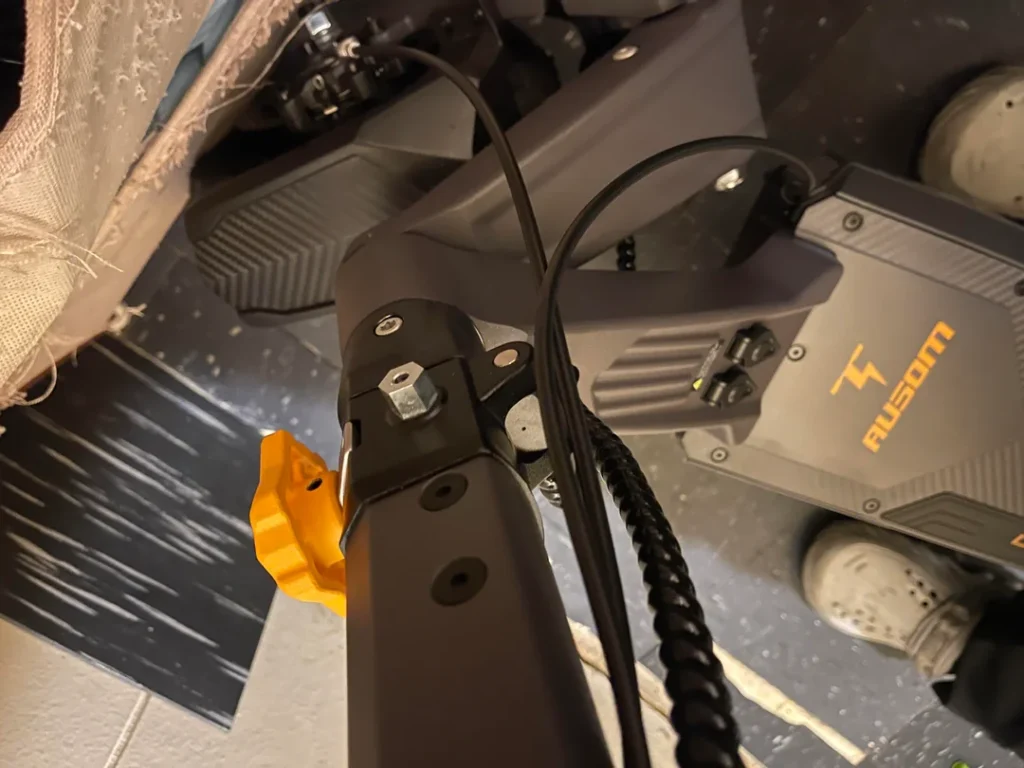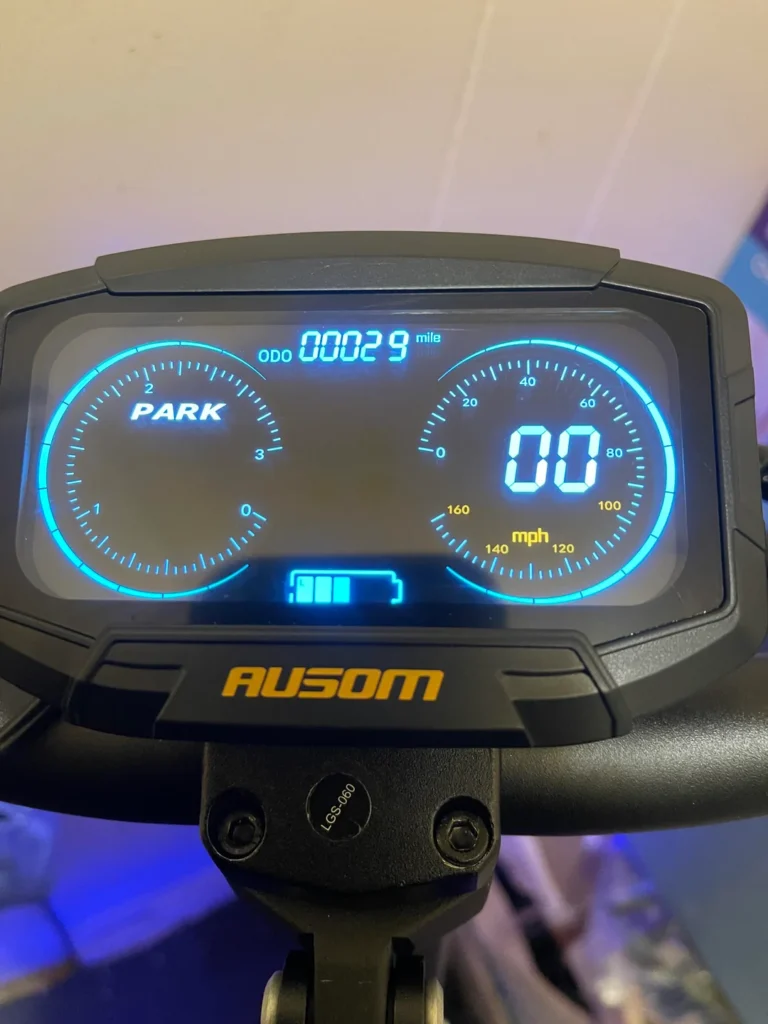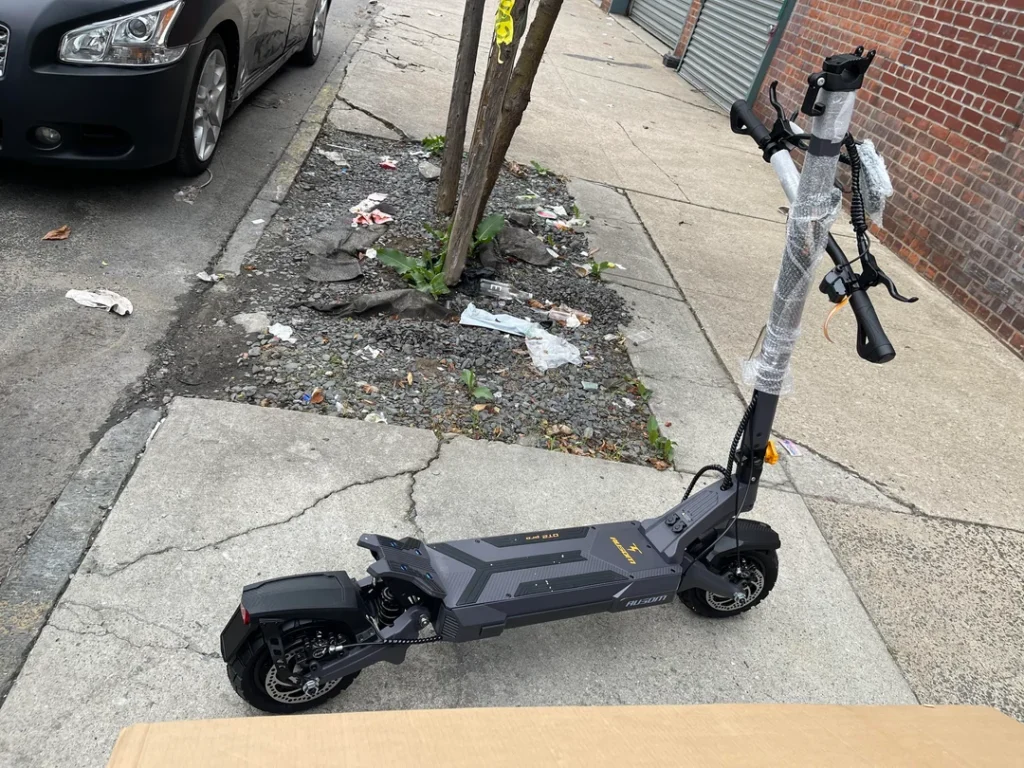The folding mechanism is one of the most important parts of any electric scooter. It allows you to fold the scooter for easy storage, transport, and daily commuting. But when this mechanism fails, it can quickly turn a fun ride into a stressful experience. Recently, a rider in New York City reported that their Ausom DT2 Pro’s folding mechanism broke on the very first ride. The stem became loose, and later, the locking knob came off completely. This story is a reminder that folding systems, while convenient, can also be a weak point if not properly maintained or if damaged during shipping.
In this article, we’ll look at why folding mechanisms matter, common problems riders face, what causes failures, how you can troubleshoot and fix them, and ways to prevent future issues. Whether you own an Ausom DT2 Pro or any other foldable scooter, these tips will help you keep your ride safe and reliable.

Why Folding Mechanisms Matter
Folding mechanisms make electric scooters practical for city living. For commuters, being able to fold a scooter means you can carry it onto a train, fit it into a car trunk, or store it in a tight apartment. For heavier models like the Ausom DT2 Pro, which weighs around 33 kilograms, folding is even more important because carrying the scooter unfolded is difficult.
The mechanism usually includes a latch, a locking knob, or a spring-loaded pin that holds the stem in place while riding. When tightened correctly, this system ensures stability and prevents wobbling. If the mechanism breaks or loosens, however, it can affect both your safety and your ability to transport the scooter easily.
Common Folding Mechanism Problems Riders Face
Many riders across different scooter brands have reported issues with the folding mechanism, and these problems can vary in severity. Common complaints include loose stems or wobbling handlebars, often caused by a locking knob that isn’t fully tightened or worn-out parts. Some riders encounter broken locking knobs, especially when made of plastic or low-quality materials, while snapped pins or bolts can occur if certain components bear more load than they are designed for, leaving the scooter unstable. Shipping damage is another factor, as boxes with dents or holes may result in bent or cracked folding parts. Latches can also get stuck or jammed due to dirt, dust, or slight misalignment, making folding or unfolding difficult. The case of a rider in NYC highlights a combination of these issues, including possible shipping damage and a failed knob. While not every rider faces these problems, being aware and prepared can prevent accidents and ensure safer rides.
Causes of Folding Failures
Folding problems don’t always mean your scooter is defective. They can be caused by several factors:
- User error – New riders sometimes forget to tighten the knob fully before riding. This leaves too much pressure on the pin or latch, which can snap under weight.
- Manufacturing flaws – In some cases, the design or materials used in the folding system may not handle stress well.
- Shipping damage – Heavy scooters shift in boxes during transport. A dented box may lead to hidden stem damage.
- High-impact riding – Jumping curbs or hitting potholes too hard puts stress on folding joints, especially during the first few rides.
- Scooter weight – Heavier models like the DT2 Pro put extra load on folding hardware compared to lighter commuter scooters.
Understanding the cause helps you decide whether the issue is fixable at home, requires replacement parts, or needs professional support.

How to Troubleshoot and Fix Folding Mechanism Issues
If your scooter starts having folding issues, there are a few steps you can take before reaching out to customer support. Begin by inspecting the knob and shaft for cracks, stripped threads, or missing parts, and check the stem alignment, especially if the box was damaged during shipping. Test folding the scooter several times without riding to identify where it’s sticking or failing. Make sure the knob is tightened properly, as loose knobs are the most common cause of stem wobbling, and check the locking pin—if it’s broken, you can still ride carefully, but replacement is recommended. For DIY fixes, replace any missing or broken screws with matching hardware, order a new knob if damaged, and lubricate the folding joints to keep them smooth. Contact support if the stem no longer folds at all, the mechanism feels unsafe even after tightening, or replacement parts aren’t readily available.
Preventing Future Folding Issues
The best way to prevent folding mechanism failures is to practice consistent maintenance. Always make sure the knob is fully tightened before riding, and avoid jumping off curbs or riding aggressively on rough terrain, especially when the scooter is new. When unboxing your scooter, inspect it carefully for any dents or scratches near the folding system. Regularly fold and unfold the scooter to keep the latch from becoming stiff, and store it in a stable folded position to reduce stress on the mechanism. Cleaning and lightly lubricating the folding parts every few weeks can also help. With these simple habits, you can extend the life of your folding system and prevent unexpected failures.

What to Do if Customer Support Delays Happen
If your scooter has folding issues and you need warranty support, delays can be frustrating, but there are steps to make the process smoother. Start by documenting everything with clear photos and videos of the damage and packaging. Contact the seller and manufacturer as soon as possible, since many have a 14-day return window. Be prepared to ship the scooter, which might require partially disassembling it to fit back into the box. Exploring local repair options can be faster than waiting weeks for replacement parts. Additionally, joining rider communities can be helpful, as forums often share part numbers, repair tips, and even 3D-printing solutions for broken knobs or pins.
Conclusion
The Ausom DT2 Pro is a powerful scooter with excellent features, but like any heavy-duty model, its folding mechanism requires care and attention. A broken knob or pin doesn’t have to mean the end of your scooter journey. Most issues can be fixed with the right tools, replacement parts, or warranty support.
By understanding how folding mechanisms work, checking them regularly, and knowing how to troubleshoot problems, riders can keep their scooters safe, portable, and fun to use. If you’ve had similar folding issues, share your experience and solutions with other riders. Together, we can keep the electric scooter community rolling smoothly.

